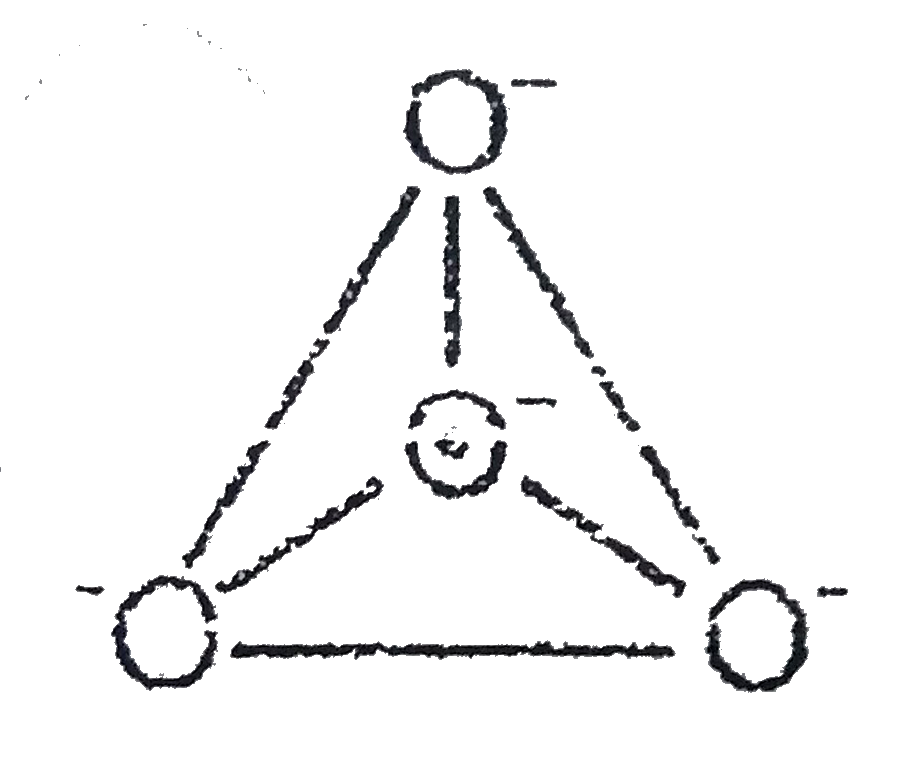Silicon is the second most abundant element (~27.2%) in the earth's after oxygen (45.5%) Carbon. Silicon, germanium, tin and lead constitute the group 14 of the periodic table. Chemistry of silicon is distinctly different from that of carbon.
For example, under standard conditions CO2 is a gas whereas SiO2 is a covalent solid.
The reason for the distinct difference in the properties of CO2 and SiO2 is :
(a)carbon is more electronegative then O and in case of SiO2 oxygen is more electronegative than silicon
(b)carbon has a small size and forms a π bond with good overlap whereas silicon has larger size hence has a poor π overlap
( c)carbon has only 'ρ' orbitals and lacks 'd' orbitals whereas silicon has 'd' orbitals
(d)first ionization potential of carbon is higher than that of silicon (1086kJmol−1 for C and 786kJmol−1 for Si).
The correct Answer is:A, B, C, D
Topper's Solved these Questions
- BOOK - RESONANCECHAPTER - P-BLOCK ELEMENT (BORON AND CARBON FAMILY)EXERCISE - PART - III : OLYMPIAD PROBLEMS (PREVIOUS YEARS) STAGE - II (INDIAN NATIONAL CHEMISTRY OLYMPIAD (INCHO)) Problem 28videos
P-BLOCK ELEMENT (BORON AND CARBON FAMILY)
- BOOK - RESONANCECHAPTER - P-BLOCK ELEMENT (BORON AND CARBON FAMILY)EXERCISE - PART - III : OLYMPIAD PROBLEMS (PREVIOUS YEARS) STAGE - V (INTERNATIONAL CHEMISTRY OLYMPIAD (IChO)) Problem 11videos
P-BLOCK ELEMENT (BORON AND CARBON FAMILY)
- BOOK - RESONANCECHAPTER - P-BLOCK ELEMENT (BORON AND CARBON FAMILY)EXERCISE - PART - III : OLYMPIAD PROBLEMS (PREVIOUS YEARS) STAGE - I (NATIONAL STANDARD EXAMINATION IN CHEMISTRY (NSEC))14videos
P-BLOCK ELEMENT (BORON AND CARBON FAMILY)
- BOOK - RESONANCECHAPTER - P BLOCK ELEMENTSEXERCISE - PART -II24videos
P BLOCK ELEMENTS
- BOOK - RESONANCECHAPTER - P-BLOCK ELEMENTS (HALOGEN & NOBLE GASES)EXERCISE - APSP PART-322videos
P-BLOCK ELEMENTS (HALOGEN & NOBLE GASES)
Similar Questions
The reason for the distinct difference in the properties of CO2andSiO2 is
View SolutionSilicon is the second most abundant element (~27.2%) in the earth's after oxygen (45.5%) Carbon. Silicon, germanium, tin and lead constitute the group 14 of the periodic table. Chemistry of silicon is distinctly different from that of carbon.
For example, under standard conditions CO2 is a gas whereas SiO2 is a covalent solid.
Draw the structures of CO2 and SiO2View Solution
Knowledge Check
- Question 1 - Select One
The reason for the distinct difference in the properties of CO2andSiO2 is
ACarbon is more electronegative than O and in case of SiO2 oxygen is more electronegative than siliconBCarbon has small size and forms a π bond with good overlap whereas silicon has larger size hence has a poor π - overlapCFirst ionization potential of carbon is higher than that of siliconDCarbon has only 'p' orbitals and lacks 'd' orbitals whereas silicon has 'd' orbitals
Silicon is the second most abundant element (~27.2%) in the earth's after oxygen (45.5%) Carbon. Silicon, germanium, tin and lead constitute the group 14 of the periodic table. Chemistry of silicon is distinctly different from that of carbon.
For example, under standard conditions CO2 is a gas whereas SiO2 is a covalent solid.
Draw the structures of CO2 and SiO2View SolutionSilicon is the second most abundant element (~27.2%) in the earth's after oxygen (45.5%) Carbon. Silicon, germanium, tin and lead constitute the group 14 of the periodic table. Chemistry of silicon is distinctly different from that of carbon.
For example, under standard conditions CO2 is a gas whereas SiO2 is a covalent solid.
Identify A and the corresponding linear polymer B.View SolutionSilicon is the second most abundant element (~27.2%) in the earth's after oxygen (45.5%) Carbon. Silicon, germanium, tin and lead constitute the group 14 of the periodic table. Chemistry of silicon is distinctly different from that of carbon.
For example, under standard conditions CO2 is a gas whereas SiO2 is a covalent solid.
The order in 1.4 can be explained on the basis of :
(a)atomic size , (b)electronegativity
(c )bond strength , (d)non-metallic characterView SolutionSilicon is the second most abundant element (~27.2%) in the earth's after oxygen (45.5%) Carbon. Silicon, germanium, tin and lead constitute the group 14 of the periodic table. Chemistry of silicon is distinctly different from that of carbon.
For example, under standard conditions CO2 is a gas whereas SiO2 is a covalent solid.
Draw the structure of a cyclic silicate having structural formula of [Si6O18]n−.Also determine the value of n
[Hint : SiO4−4 can be shown as unit]View Solution
unit]View SolutionSilicon is the second most abundant element (~27.2%) in the earth's after oxygen (45.5%) Carbon. Silicon, germanium, tin and lead constitute the group 14 of the periodic table. Chemistry of silicon is distinctly different from that of carbon.
For example, under standard conditions CO2 is a gas whereas SiO2 is a covalent solid.
Draw the structure of a cyclic silicate having structural formula of [Si6O18]n−.Also determine the value of n
[Hint : SiO4−4 can be shown as unit]View Solution
unit]View SolutionSilicon is the second most abundant element (~27.2%) in the earth's after oxygen (45.5%) Carbon. Silicon, germanium, tin and lead constitute the group 14 of the periodic table. Chemistry of silicon is distinctly different from that of carbon.
For example, under standard conditions CO2 is a gas whereas SiO2 is a covalent solid.
In a silicon manufacturing unit, silicon is obtained by heating 100kgof pure sand with 45kg of high grade coke in an electric furnace. Write the balanced equation of the reaction.View SolutionSilicon is the second most abundant element (~27.2%) in the earth's after oxygen (45.5%) Carbon. Silicon, germanium, tin and lead constitute the group 14 of the periodic table. Chemistry of silicon is distinctly different from that of carbon.
For example, under standard conditions CO2 is a gas whereas SiO2 is a covalent solid.
Group 14 elements have tendency to catenate. The first three members C,Si and Ge show significant catenation. Arrange these elements in decreasing order of their catenation tendency.View Solution

